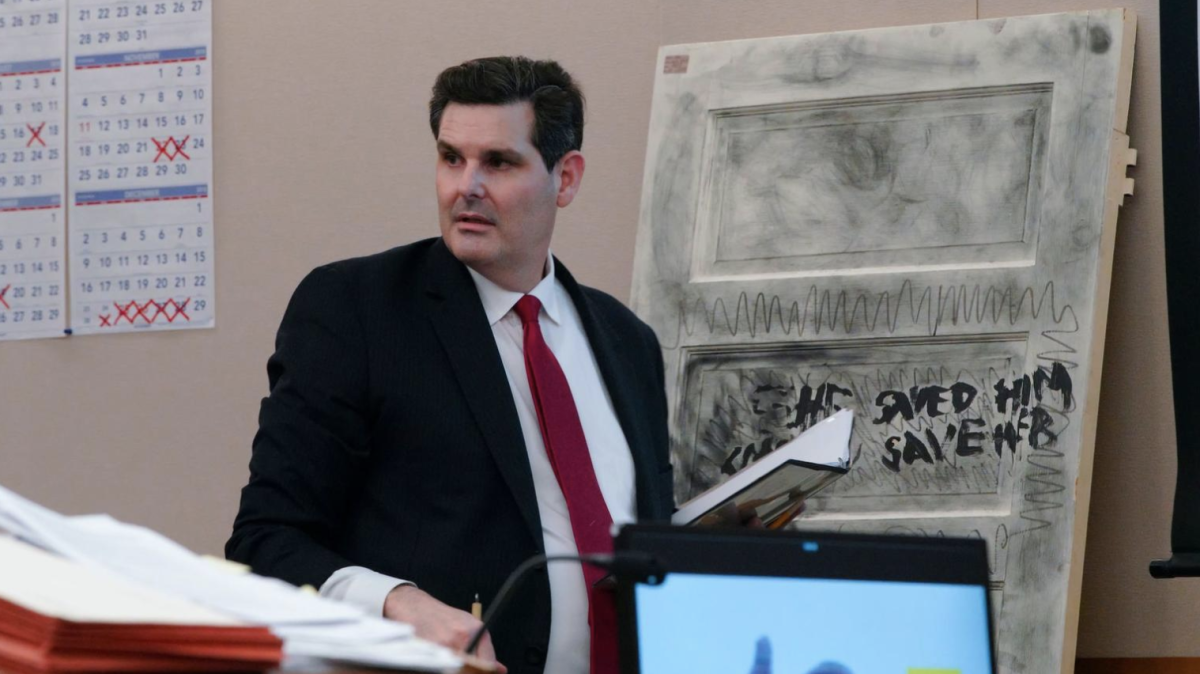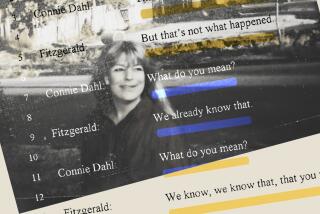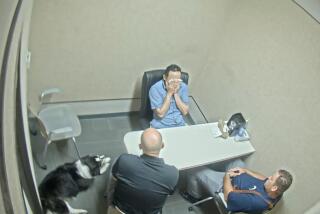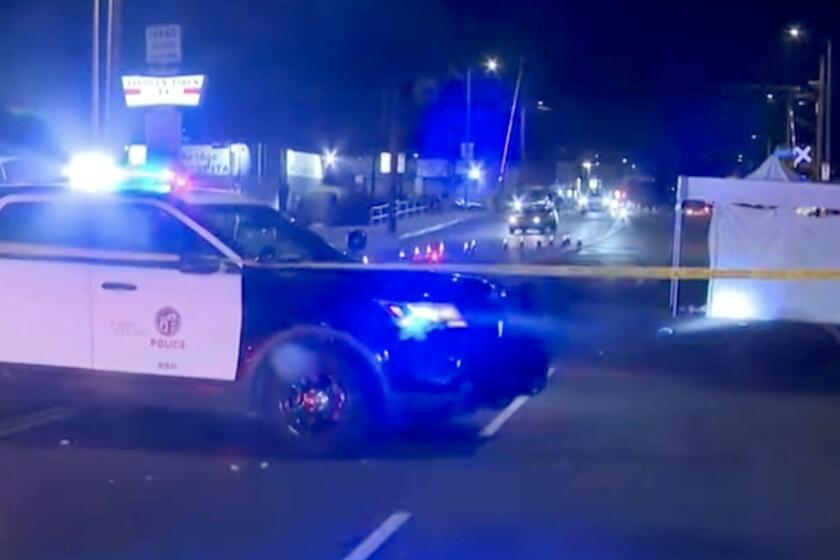Cryptic message found at Coronado mansion death scene takes center stage at trial

The message left in black on the door to the bedroom where Rebecca Zahau was found dead was cryptic. Two lines, no punctuation.
The first read: “She saved him” The next: “Can you save her”
Theories on just who wrote the enigmatic message took center stage in a San Diego courtroom Monday afternoon, during the third day of trial testimony rising from the wrongful death lawsuit brought by Zahau’s family.
They reject the official finding that 32-year-old Zahau — found hanging nude, bound, and gagged — committed suicide July 13, 2011, by throwing herself over a second-story balcony in her boyfriend’s Coronado home, and instead accuse her boyfriend’s brother, Adam Shacknai, in her death.
Shacknai’s attorney told jurors during opening statements last week that there would be no evidence presented in trial that supports the family’s claims.
On Monday, the Superior Court jury got a look at the door, with its message painted in black.
Handwriting expert Michael Wakshull testified that he compared Shacknai’s handwriting and Zahau’s handwriting, and said that it was more likely that Shacknai had written the message, not Zahau.
Wakshull, hired by the plaintiffs, relied on comparisons of the letters A and M that each had written.
Wakshull said he had only compared the handwriting of Zahau and Shacknai with the message on the door, and did not compare anyone else’s handwriting. He also said he could not say it was probable that Shacknai had written the words on the bedroom.
Zahau’s family alleges Shacknai hit her on the head, strangled, stripped and bound her, then tossed her off a balcony with a noose around her neck.
Shacknai, now 54, found Zahau’s body in the home known as the Spreckles mansion, where he was staying in the guest house. He called 911 and cut her body down.
Zahau was found dead two days after her boyfriend’s 6-year-old son took a fall in the mansion that left him gravely injured. The boy’s father is Arizona pharmaceuticals millionaire Jonah Shacknai, who was divorced from the boy’s mother, Dina Shacknai.
Max had been in Zahau’s care when he fell from a second-story staircase landing to the foyer.
Authorities who declared Zahau’s death a suicide suggested that she felt deep remorse for being in charge when Max fell. The child suffered major head trauma and died several days later, after her death.
Also taking the stand Monday was a counselor who happened to be with a Coronado police officer on the day that Max fell, and they went to the home.
The counselor is a member of the county’s Psychiatric Emergency Response Team, and was on a ride-along that day. She was not working in that capacity when they went to the Spreckles mansion, she testified.
When they arrived, Max had already been taken to a hospital. The counselor, Karen Hancock, spent an hour and a half to two hours talking with Zahau. They were together at the hospital where the 6-year-old had been taken to, then went to Shacknai’s father’s home, she testified Monday.
Hancock said Zahau was not tearful, but she was visibly upset.
“She was shaking most of the time,” Hancock said.
Testimony in the case is expected to continue Tuesday.
Figueroa writes for the San Diego Union-Tribune.
More to Read
Sign up for Essential California
The most important California stories and recommendations in your inbox every morning.
You may occasionally receive promotional content from the Los Angeles Times.










